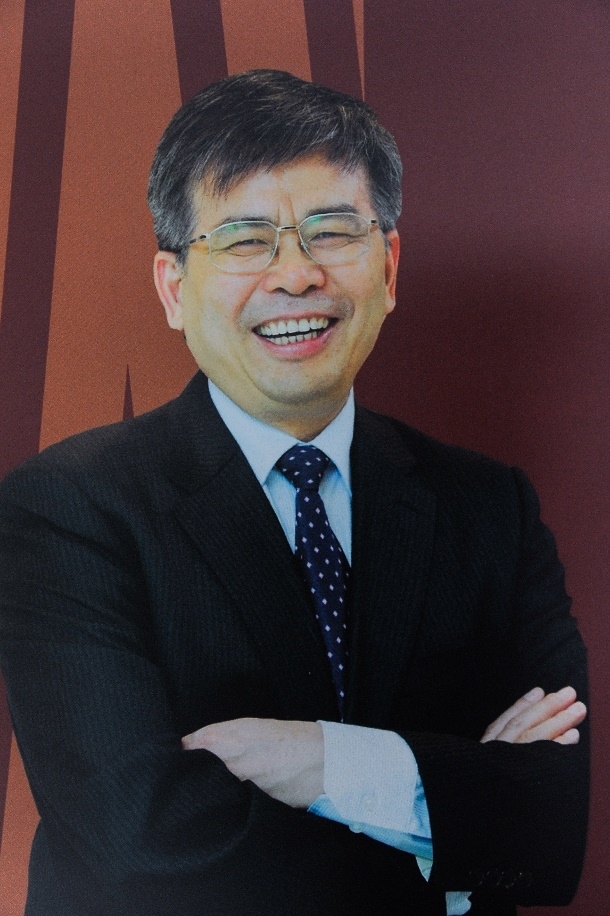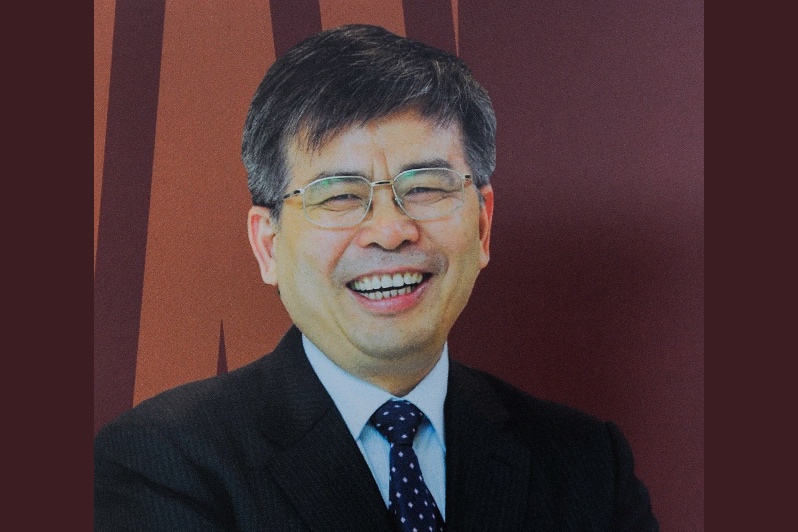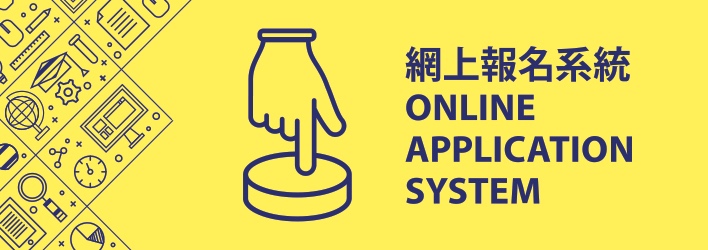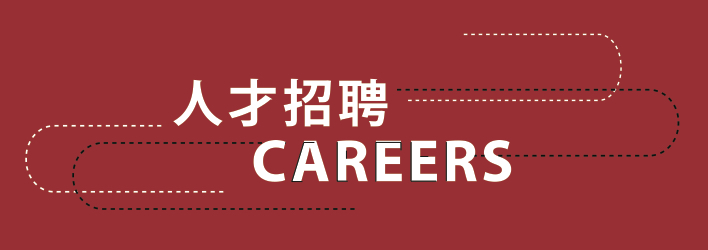Academician of Chinese Academy of Engineering, President of Macau University of Science and Technology, and Director of the State Key Laboratory of Quality Research in Chinese Medicine Chair Professor Liu Liang was inducted as a fellow of the National Academy of Inventors (NAI).
The NAI Fellow is the highest honor awarded by the NAI, to inventors conducting academic research in universities or non-profit organizations across the world, in recognition of their contributions to improving human life quality and fostering economic development and social welfare via their inventions and innovations. Since it was founded in 2010, the NAI has awarded the NAI Fellow honor to 1228 well known inventors from over 250 prestigious universities and non-profit research institutes, and are collectively owners of over 41,500 US patents.

The NAI selects new fellows once every year. In 2019, altogether 168 renowned inventors are awarded fellowship, including 4 Nobel Prize laureates and 6 winners of the US National Medal of Technology and Innovation or the US National Medal of Science. The newly inducted members this year are from 135 research-based universities and non-profit organizations in the world; altogether they are owners of 3500 US patents, covering a wide range of subject fields, including neurobehavioral sciences, gardening, photonics, and traditional medicines. The new NAI Fellows will be officially inducted at the 9th Annual Meeting of the National Academy of Inventors to be held at the Heard Museum in Phoenix, Arizona, United States on April 11, 2020.
Prof. R. Sanberg, the president of NAI said, “I am so impressed by the caliber of this year’s class of NAI Fellows, all of whom are highly-regarded in their respective fields. The breadth and scope of their discovery is truly staggering. I’m excited to not only see their work continue, but also to see their knowledge influence a new era of science, technology, and innovation worldwide.”
Chair Prof. Liu Liang is the only scholar from the Hong Kong and Macao region awarded the NAI Fellow honor in 2019. He is a renowned specialist in Chinese medicine, with prolific accomplishments in diagnosis and treatment of rheumatic diseases in Chinese medicine and in research of innovative anti-arthritis drugs. He’s published over 230 papers in world’s famous journals such as Science and Nature supplements, Nature Medicine, Annals of the Rheumatic Diseases, and Microbiome. He is owner of 27 international patents as the 1st inventor. Chair Prof. Liu Liang’s research in diagnosis and treatment of rheumatic diseases in Chinese medicine has made multiple breakthroughs, which have filled many international voids, in recognition of which he was elected Academician of the Chinese Academy of Engineering in November of 2019. In view of his being elected NAI Fellow, Chair Prof. Liu Liang noted that his being given the international honor once again testified to the immense potentials of Traditional Chinese Medicine in science and technology innovations and inventions; when the research forces of Chinese medicine conduct independent, original, and innovative research by integrating and applying the advanced technologies and techniques of multiple disciplines and fields, it is very likely that the research will lead to the world’s first-class achievements with global impact to be highly recognized by the international community; there is a bright prospect that Chinese medicine reaches the world and serves the entire mankind.
Attachment: The complete list of newly inducted 2019 NAI Fellows
- Ernesto V. Abel-Santos, University of Nevada, Las Vegas
- David A. Ahlquist, Mayo Clinic
- Susan D. Allen, Embry-Riddle Aeronautical University
- Andrea Alù , City University of New York Advanced Science Research Center, Photonics Initiative
- Guillermo A. Ameer, Northwestern University
- Subramaniam Ananthan, Southern Research Institute
- Gattadahalli M. Anantharamaiah, The University of Alabama at Birmingham
- Nirwan Ansari, New Jersey Institute of Technology
- Rodolphe Barrango, North Carolina State University
- Rena Bizio, The University of Texas at San Antonio
- Michael Blaber, Florida State University
- Anne J. Blaschke-Bonkowsky, The University of Utah
- Stephen A. Boppart, University of Illinois at Urbana-Champaign
- Robert Bowser, Barrow Neurological Institute
- Michael S. Brown, University of Texas Southwestern Medical Center
- Ardeshir (Adi) Ratan Bulsara, Naval Information Warfare Center
- Jason Burdick, University of Pennsylvania
- Lewis C. Cantley, Cornell University
- Michael L. Chabinyc, University of California, Santa Barbara
- Bryce Chackerian, The University of New Mexico
- Paul Citron, University of California, San Diego
- John P. Cooke, Houston Methodist Research Institute
- Jerome Cox, Washington University in St. Louis
- Seamus Curran, University of Houston
- Pamela B. Davis, Case Western Reserve University
- Cristina E. Davis, University of California, Davis
- Peter B. Dervan, California Institute of Technology
- Tejal A. Desai, University of California, San Francisco
- Christos Dimitrakopoulos, University of Massachusetts Amherst
- Jon P. Dobson, University of Florida
- Francis Joseph Doyle, III, Harvard University
- Dongsheng Duan, University of Missouri-Columbia
- Dean B. Edwards, University of Idaho
- Ayman Sabry El-Baz, University of Louisville
- John F. Engelhardt, University of Iowa
- Laura Ensign, Johns Hopkins University
- William J. Federspiel, University of Pittsburgh
- Terri Fiez, University of Colorado Boulder
- Francis Stuart Foster, University of Toronto
- Kaizhong Gao, Argonne National Laboratory
- Adolfo Garcia-Sastre, Mount Sinai Health System
- Glenn R. Gaudette, Worcester Polytechnic Institute
- Robert J. Genco, University at Buffalo, The State University of New York
- Georgios B. Giannakis, University of Minnesota
- John Murray Gibson, Florida A&M University
- Joseph L. Goldstein, University of Texas Southwestern Medical Center
- Kenneth E. Goodson, Stanford University
- Renukaradhya J. Gourapura, The Ohio State University
- David Grewell, North Dakota State University
- David Grier, New York University
- Robert E. Guldberg, University of Oregon
- Bernard Franklin Gupton, Virginia Commonwealth University
- Horst Hahn, Karlsruhe Institute of Technology/University of California, Irvine
- Yousef Haik, Hamad Bin Khalifa University
- Robert P. Hammer, Louisiana State University
- Luis Rafael Herrera-Estrella, Texas Tech University/Centro de Investigación y de Estudios Avanzados
- Bertrand Hochwald, University of Notre Dame
- Robert S. Hodges, University of Colorado Anschutz
- Jeffrey O. Hollinger, Carnegie Mellon University
- Victor J. Hruby, The University of Arizona
- Hong Hua, The University of Arizona
- Jessica E. Huber, Purdue University
- John David Irwin, Auburn University
- Bor Zeng B. Jang, National Cheng Kung University
- Jules Janick, Purdue University
- Wilfred A. Jefferies, The University of British Columbia
- Jerome B. Johnson, University of Alaska Fairbanks
- Wayne Jones, University of New Hampshire
- Eric R. Kandel, Columbia University
- Kristi Kiick, University of Delaware
- Israel Kleinberg, Stony Brook University
- Leonard Kleinrock, University of California, Los Angeles
- Melissa Knothe Tate, University of New South Wales
- Julia A. Kornfield, California Institute of Technology
- David M. Kranz, University of Illinois at Urbana-Champaign
- Jack H. Ladenson, Washington University in St. Louis
- Gianluca Lazzi, University of Southern California
- Walter S. Leal, University of California, Davis
- Fred J. Leonberger, University of South Florida
- Danuta Leszczynsk, Jackson State University
- Yiannis A. Levendis, Northeastern University
- Jonathan S. Lewin, Emory University
- Jun Li, Kansas State University
- David A. Lightfoot, Southern Illinois University
- Jingyu Lin, Texas Tech University
- Yuehe Lin, Washington State University
- Fu-Tong Liu, Academia Sinica
- Liang Liu, Macau University of Science and Technology
- Kunlei Liu, University of Kentucky
- Ray Liu, University of Maryland
- Karen Lozano, The University of Texas Rio Grande Valley
- G.Q. Max Lu, University of Surrey
- Anita Mahadevan-Jansen, Vanderbilt University
- Radenka Maric, University of Connecticut
- Olimpia Meucci, Drexel University
- Sanjit K. Mitra, University of California, Santa Barbara
- John P Mugler, III, University of Virginia
- Priyabrata Mukherjee, University of Oklahoma
- Satish Nagarajaiah, Rice University
- Madhavan Nair, Florida International University
- Balaji Narasimhan, Iowa State University
- Kathryn Nightingale, Duke University
- Valentine Asongu Nzengung, University of Georgia
- Fiorenzo Omenetto, Tufts University
- Boon S. Ooi, King Abdullah University of Science and Technology
- Ebru Oral, Harvard Medical School
- Mihrimah Ozkan, University of California, Riverside
- Peter Palese, Mount Sinai Health System
- Keith D Paulsen, Dartmouth College
- David S. Peabody, The University of New Mexico
- Carlos Pignataro, North Carolina State University
- Albert P. Pisano, University of California, San Diego
- Leslie S. Prichep, New York University
- Yihong Qi, Missouri University of Science and Technology
- Roderic Quirk, The University of Akron
- John Michael Ramsey, The University of North Carolina at Chapel Hill
- Aragula Gururaj Rao, Iowa State University
- Mehdi Razavi, Texas Heart Institute
- Floyd E. Romesberg, The Scripps Research Institute
- Mendel Rosenblum, Stanford University
- Rob A. Rutenbar, University of Pittsburgh
- Daniela Salvemini, Saint Louis University
- Kamal Sarabandi, University of Michigan
- Roger R. Schmidt, Syracuse University
- Holger Schmidt, University of California, Santa Cruz
- Christopher A. Schuh, Massachusetts Institute of Technology
- Steve Schwendeman, University of Michigan
- Thomas A. Sellers, H. Lee Mo‑tt Cancer Center & Research Institute
- Timothy John Senden, Australian National University
- Surendra P. Shah, The University of Texas at Arlington/ Northwestern University
- Mubarak Shah, University of Central Florida
- Neil G. Siegel, University of Southern California
- John C. H. Spence, Arizona State University
- Peter J. Stang, The University of Utah
- James Fraser Stoddart, Northwestern University
- Howard A. Stone, Princeton University
- James C. Sturm, Princeton University
- Kenneth Ray Swartzel, North Carolina State University
- Francis C. Szoka, University of California, San Francisco
- Lakshman Tamil, The University of Texas at Dallas
- Gabor Temes, Oregon State University
- H. Thomas Temple, Nova Southeastern University
- Gregory J. Thompson, West Virginia University
- Natalia A. Trayanova, Johns Hopkins University
- Hai T. Trieu, The University of Memphis
- Li-Huei Tsai, Massachusetts Institute of Technology
- Aykut Üren, Georgetown University
- Carl-Wilhelm Vogel, University of Hawai’i Cancer Center
- Lawrence Wald, Massachusetts General Hospital Research Institute
- Ge Wang, Rensselaer Polytechnic Institute
- Hongjun Wang, Stevens Institute of Technology
- Chao-Yang Wang, The Pennsylvania State University
- Eric Dean Wetzel, U.S. Army Research Laboratory
- Margaret Wheatley, Drexel University
- Ryan Wicker, The University of Texas at El Paso
- Samuel A. Wickline, University of South Florida
- Robert Williams, III, The University of Texas at Austin
- Blake S. Wilson, Duke University
- Stanislaus S. Wong, Stony Brook University
- Chee Wei Wong, University of California, Los Angeles
- Karen L. Wooley, Texas A&M University
- Min Wu, University of Maryland
- Jenny Jie Yang, Georgia State University
- Cathy Yao, Baylor College of Medicine
- Samuel Yen-Liang Yin, National Taiwan University
- Gleb Yushin, Georgia Institute of Technology
- Xin Zhang, Boston University
- Chuan-Jian Zhong, Binghamton University, The State University of New York

 Academician of Chinese Academy of Engineering, President of Macau University of Science and Technology, and Director of the State Key Laboratory of Quality Research in Chinese Medicine Chair Professor Liu Liang was inducted as a fellow of the National Academy of Inventors (NAI).
Academician of Chinese Academy of Engineering, President of Macau University of Science and Technology, and Director of the State Key Laboratory of Quality Research in Chinese Medicine Chair Professor Liu Liang was inducted as a fellow of the National Academy of Inventors (NAI).



